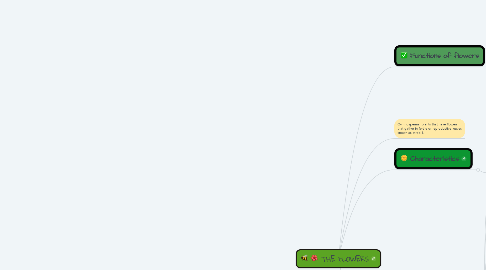
1. Gymnosperms: plants that have flowers that gather in fertile or reproductive leaves known as strobili.
2. Functions of flowers
2.1. The Flowers apart from being the decorative element of a plant.
2.2. It is animal feed and fragrances are made from them.
2.3. Fruits that play an important role in plant reproduction.
2.4. Most important functions of flowers is pollination
2.5. The main function of flowers is to make possible the reproduction of plants.
3. Characteristics
3.1. Most plants produce flowers and are called spermatophytes. These spermatophytes differ into two groups:
3.1.1. Angiosperms: are plants that have a typical flower that can even reproduce fruits with seeds. They are the most advanced and predominant plants on Earth.
4. Parts and functions
4.1. Peduncle
4.1.1. The peduncle is the last part of the stem that holds the flower, it is where the modified leaves are inserted
4.2. Receptacle
4.2.1. The receptacle or flower axis is the part that follows the peduncle
4.3. Perianth
4.3.1. The floral envelope is called perianth, that is, the leaves that protect and envelop the reproductive organs of the flower
4.3.1.1. Calyx: it is a structure made up of sepals, which are similar to leaves and green in color. Its function is to protect and hold the flower petals when it is still a bud.
4.3.1.2. Corolla: it is the part made up of the colorful and striking petals or antophiles of the flower in order to attract pollinating animals
4.4. Carpelo
4.4.1. The carpel forms the female reproductive part of the flower. The set of carpels forms the gyneceum, which can contain one or more
4.5. Pistils
4.5.1. Pistil The units of the female organ of the flower that contains the style, stigma and ovaries, which together make up the carpel, are called pistil.
4.6. Gineceo is the feminine reproductive apparatus of the flower. It consists of one or more green leaves or carpels joined or separated through a pistil, on which the ovules that contain the female gametes are produced. Gynecium is made up of the following elements
4.6.1. Style: cylindrical and tubular structure that serves to store and conduct pollen.
4.6.2. Stigma: it is the upper part of the pistil. Its function is to make the sticky nectar necessary for pollen.
4.6.3. Ovary: it is located in the lower area of the pistil formed by one or more carpelar leaves. It contains the ovules that will be fertilized by male pollen.
4.7. Gynecium
4.8. Androecium
4.8.1. Male gametes of the flower are called androceous
4.8.1.1. Stamen: it is the male organ that develops in flowers and where pollen is produced
4.8.1.2. Anther: terminal part of the flower stamen, where pollen production takes place.
4.8.1.3. Filament: it is the part that supports the anther, it is also the sterile part of the stamen. It can vary in size and shape depending on the type of flower. Teak: it is where the pollen grains are found.
4.8.1.4. Teak: it is where the pollen grains are found.
4.9. Petals
4.9.1. The petals vary according to the type of flower and its colors, which in addition to attracting pollinating animals, also attract people's eyes.
